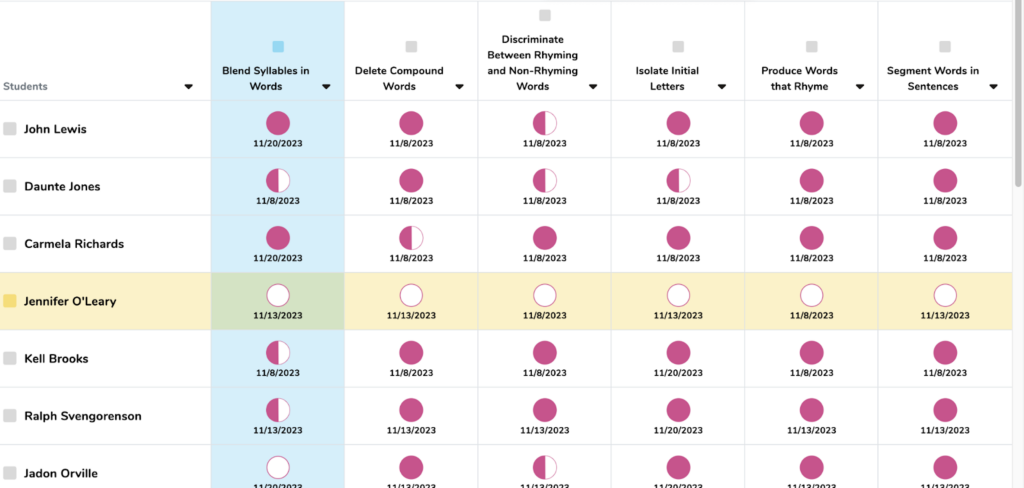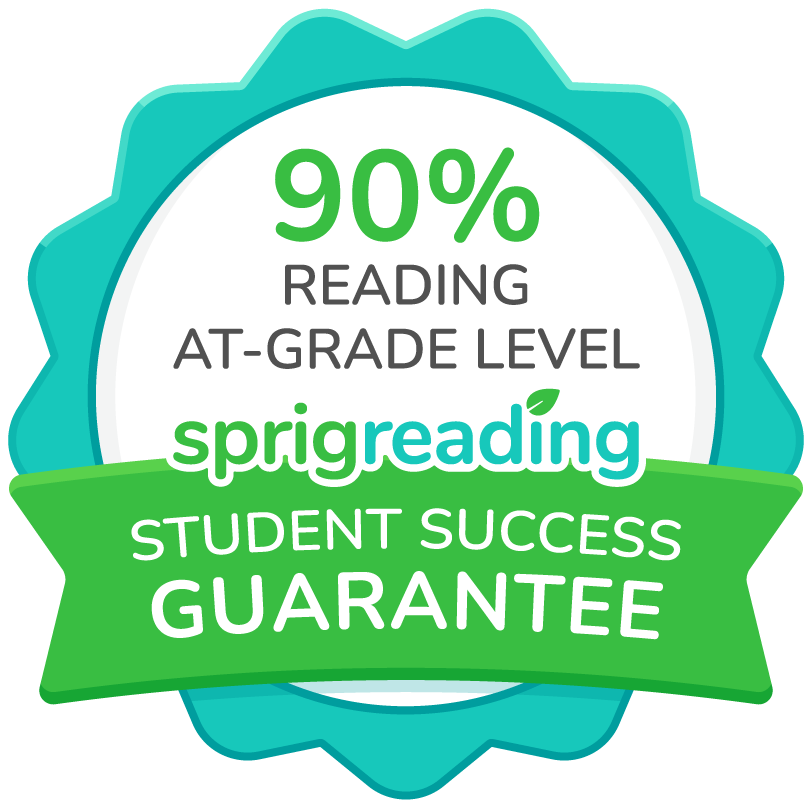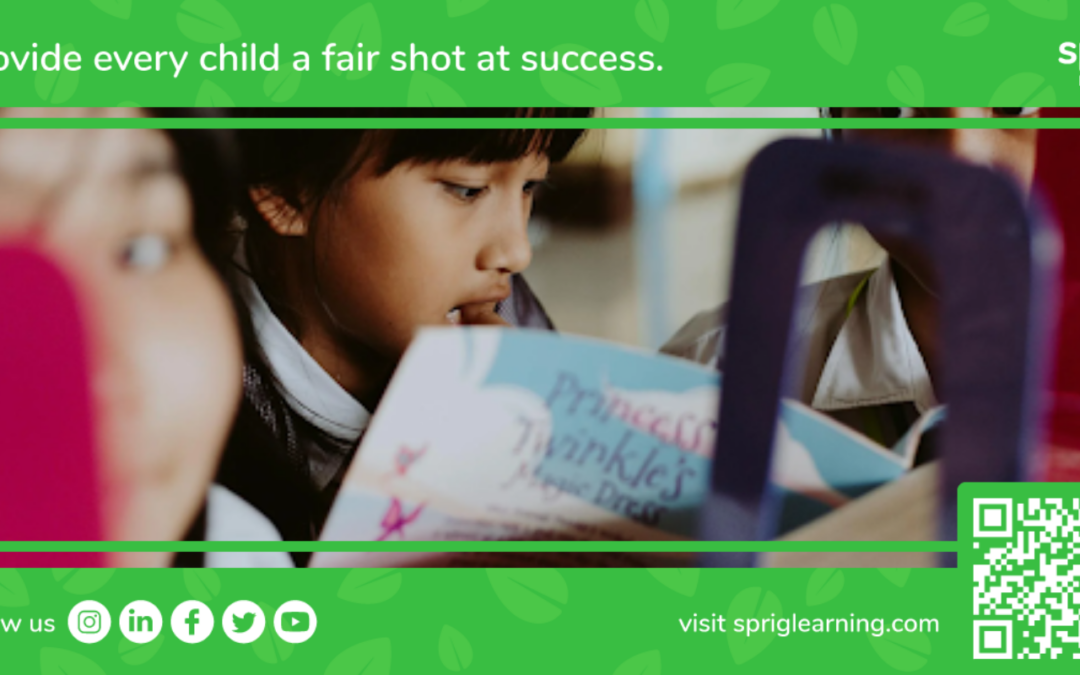Assessment is a critical component of early literacy, providing teachers with valuable insights into student progress and guiding instruction.
Two commonly used assessment methods to guide literacy instruction in the classroom are progress monitoring assessments and benchmark screeners.
In this blog, both progress monitoring assessments and benchmark screeners are described as formative assessments, in that they are assessments “for learning”, to help guide instruction for continuous improvement.
Progress monitoring has the unique distinction of being assessments “as learning” as well, meaning the assessment itself, because of its high frequency usage in the classroom can be used to help students in setting their own goals, and monitoring their progress towards those goals.
These distinctions are covered in a prior blog, “How to Improve Formative Assessments for Early Literacy?”, a must-read if you are gathering information on best assessment practices or are interested in the subject.
This blog will explore progress monitoring assessments and benchmark screeners, discuss the strengths and challenges of each, and finally describe a strategy where both can be enhanced.
When discussing each type of assessment, the operating assumption will be that they are research-based, as this is the expected standard for early learning assessments, and it’s a commitment Sprig Learning upholds across all its solutions.
This means that these assessments focus on reading skills that are supported by the latest research into what drives reading success. They also separately assess the distinct skill sets required for reading.
As a result, teachers are able to successfully obtain the data they need to manage the diverse needs of students in their classrooms.
What is a Progress Monitoring Assessment?
Pros VS Cons

A progress monitoring assessment can be a formal or informal formative assessment used to regularly evaluate a child’s reading expertise across multiple foundational reading skills throughout the school year.
This assessment method provides a real-time snapshot of where a student is on their reading journey.
Pros
- Offers Immediate Feedback: Provide instant insights into a student’s reading performance and an indication of how regular classroom instruction can be tweaked to better serve the student.
- Generates Granular Level Data: Monitor a students’ progress in multiple skills addressing their greatest needs to ensure that they are helped in the area that is inhibiting them from making progress.
Cons
- Needs to be consistently scheduled: Although this is what is required for progress monitoring, it can be challenging for teachers to fit this into their busy schedules and be consistent with the practice.
- Can Lead to Myopic Sight: Certain skills may be monitored regularly, especially those identified as needing more attention in more formal diagnostic assessments. But this leaves the door open for irregularity in practice of other reading skills, leading to slow progress of expertise in those areas.
What is a Benchmark Screener?
Pros VS Cons

A benchmark screener is a more formal assessment method that evaluates specific reading skills at designated intervals throughout the school year. Common practice is for students to receive a screening assessment two to three times a year.
Standardized tests are typically used to assess foundational reading skills. These tests measure individual performance against benchmarks for the knowledge expected at a certain point in time, guiding students toward reading mastery. They can also compare individual results with the classroom’s overall average, and a historical average if that data is available.
Pros
- Ease of Comparison: Benchmark screeners provide a standardized measure, allowing for comparisons across grade levels and other students. It can indicate whether a student is on track to read successfully by Grade 3, while also showing how their reading performance compares to others in the class. This allows a teacher to understand how their entire class is responding to whole class/core instruction.
- Insight into Specific Skills: The screener provides data to help with informing instruction and illuminates specific focus areas. Specific instruction can be planned from the screener for specific skills and students.
Cons
- Stressful for Students: Standardized tests can be intimidating and high-stakes, especially for young learners. This holds true for benchmark screeners as well. Though of course, this can always be mitigated by well-trained and experienced teachers.
- Difficult and Costly to Implement for Teachers: Benchmark screeners require significant setup time and extensive teacher training to implement effectively and consistently.
- Rigidity Causes Misalignment with Instruction and Student Individuality: Benchmarks are typically set and cannot be easily adjusted to instructional focus. This rigidity can lead to a disconnect between assessment outcomes and the evolving classroom needs of students. It simply is not flexible enough to capture ongoing changes in the classroom.
Additionally, benchmark screeners are not framed in a strength-based approach and account for the diverse interests and sociocultural backgrounds of students.
How Can Teachers Make the Best Use of Each Assessment Type?

To maximize the benefits of progress monitoring assessments and benchmark screeners , teachers must use the data collected to inform classroom instruction. Some questions to consider while making the adjustments:
- Have we given the student enough explicit instruction?
- Have we given the student enough time to practice?
- How can we personalize our instruction and group students based on similar skill needs?
To enhance benchmark screeners, one can introduce progress monitoring assessments consistently throughout the year.
These regular “pulse checks” on reading help familiarize students with frequent progress checks, reducing intimidation on the day of more standardized assessments.
While progress monitoring helps to make informed instructional decisions and adjustments, benchmark screeners help to set initial goals in the planning process.
By creating a system where both progress monitoring assessments and benchmark assessments have a place together in the classroom, the student stands to benefit from such an assessment culture adopted by the school.
It is advisable to intersperse benchmark assessments with progress monitoring assessments throughout the school year to ensure a well-rounded understanding of each student’s literacy journey.
How Sprig Reading Enhances Screeners and Progress Monitoring

Sprig Reading is an educator’s digital progress monitoring tool that enhances any evidence-based early literacy program, screener or classroom resource.
It monitors student progress as well as enhances existing assessment tools like screeners and other progress monitoring systems.
In particular, it helps teachers track student progress through continuous assessments, integrating seamlessly with benchmark screeners to provide a complete picture of student literacy over time.
Its intuitive mechanism enables teachers to assess students on a daily and weekly basis, which helps them customize both instruction and informal assessments tailored to the whole class and individual students.
With Sprig Reading, teachers can:
Conduct Efficient Progress Monitoring Assessments: Use the platform to streamline reading skill progress monitoring for students, where their progress in relevant reading skills that need to be taught at their grade level are regularly checked and updated.
Generate Comprehensive Reports: Produce detailed reports for each student that tracks their progress over time in each skill, but also lets teachers know where a student is based on research-based expectations for each skill.
Thus, as a progress monitoring tool, Sprig Reading enhances the use of benchmark screeners by allowing teachers to consistently assess, track and monitor all of the foundational reading skills.
Regardless if a school or teacher implements one or both of these assessment types, it is advisable that they strengthen these approaches by finding complementary solutions, which will not interfere but rather will serve to optimize them!
Are you looking for one solution for doing both? Or separate solutions? Or perhaps in a large enough system, you are looking at multiple solutions for doing just one assessment type?
That will come down to a question of understanding what other capabilities you are looking for in your assessment tool. You may want to read “11 Key Questions for Selecting The Right Early Literacy Assessment(s) for Your School”.
Sprig Reading 3.0 Has Launched!

Using intuitive Circle Charts, teachers regularly input data that is used to differentiate instruction and monitor reading skill progression against research-based benchmarks.

